What Does VIP Stand For: Complete Guide [English]

Written by
Ernest Bio Bogore

Reviewed by
Ibrahim Litinine
![What Does VIP Stand For: Complete Guide [English]](/_next/image?url=https%3A%2F%2Fcdn.sanity.io%2Fimages%2F147z5m2d%2Fproduction%2Feb9a0af1f0641fa489c11aa19d67d990734e687d-2240x1260.png&w=3840&q=75)
The acronym VIP pervades modern society across every industry, venue, and social context. Yet most people using this term daily never pause to examine its origins, evolution, or the profound implications of the privilege structure it represents. Understanding what VIP stands for requires analyzing not just the basic definition, but the economic, social, and cultural mechanisms that transformed a wartime military designation into the foundation of today's experience economy.
The Primary Definition: Very Important Person
VIP stands for "Very Important Person" or "Very Important Personage," referring to individuals accorded special privileges due to their high social rank, status, influence, or importance. This designation fundamentally creates a two-tier system wherever it operates—separating those deemed worthy of enhanced treatment from the general population.
The concept materializes through tangible benefits: priority access, premium accommodations, personalized service, and exclusive areas off-limits to standard participants. VIP treatment typically involves separation from common people and a higher level of comfort or service. This segregation isn't accidental; it's the core value proposition that makes VIP status economically viable.
Historical Origins and Military Genesis
The acronym emerged in the 1930s during what etymologists call "a boom decade for initialisms," with its earliest documented usage appearing in 1933. However, the term's widespread adoption occurred during World War II, when military personnel needed efficient ways to identify high-ranking officials requiring enhanced security protocols.
The Royal Air Force played a crucial role in popularizing VIP terminology, using it to organize flights for important military leaders while concealing names from enemy intelligence. This practical military application established the template for modern VIP systems: discretion, security, and preferential resource allocation based on hierarchical importance.
The wartime context reveals why VIP systems emerged. When resources are scarce and stakes are high, organizations must prioritize. Military forces couldn't treat all personnel equally when some individuals possessed strategic knowledge or operational authority that could determine battle outcomes. This utilitarian calculation—that some people's comfort and safety matter more than others'—became embedded in the VIP concept from its inception.
Contemporary VIP Applications Across Industries
Entertainment and Events
The entertainment industry transformed VIP from a military designation into a commercial product. VIP hospitality packages now provide exclusive amenities, comfort, and access, elevating the overall event experience for high-profile guests. Concert venues, sports stadiums, and festivals routinely offer multiple VIP tiers, each promising increasingly exclusive experiences.
This commercialization represents a fundamental shift. Military VIP status was earned through rank and responsibility. Commercial VIP status is purchased. The democratization of VIP access—where anyone with sufficient disposable income can buy enhanced treatment—reveals how market forces reshape social hierarchies.
Corporate Hospitality and Business Development
Businesses use VIP hospitality programs to manage executive-level travel, gifts, hotel suites, and event tickets, often involving substantial financial investments. Corporate VIP programs serve multiple strategic functions: client retention, relationship building, and competitive differentiation.
The business logic is compelling. When companies compete for high-value contracts, the quality of relationship often determines outcomes. VIP experiences create emotional bonds that transcend transactional interactions. A client who attended an exclusive Formula 1 paddock experience isn't just remembering superior catering—they're associating your company with prestige, access, and exceptional treatment.
Hospitality and Travel
Hotels, airlines, and luxury service providers have built entire business models around VIP differentiation. These systems typically operate through loyalty programs, membership tiers, and premium service offerings that create artificial scarcity and exclusivity.
The psychology is sophisticated. VIP status doesn't just provide better service—it provides identity reinforcement. Customers aren't just buying upgraded amenities; they're purchasing confirmation of their social and economic position. The visible markers of VIP status (special check-in areas, priority boarding, exclusive lounges) serve as public displays of success and importance.
Alternative Meanings and Technical Applications
Beyond its primary social meaning, VIP serves as an acronym across numerous technical and professional fields. In medical contexts, VIP commonly refers to Vasoactive Intestinal Peptide, a peptide playing crucial roles in vasodilation and intestinal water and electrolyte secretion regulation.
This medical usage demonstrates how acronyms evolve independently across specialized domains. Healthcare professionals using "VIP" in patient charts aren't invoking concepts of social status—they're referencing specific biochemical processes. AcronymFinder lists 160 different definitions for VIP across categories including Information Technology, Military & Government, Science & Medicine, and Business & Finance.
The proliferation of VIP meanings across technical fields illustrates how successful acronyms become linguistic real estate. Once an abbreviation achieves recognition, different industries adapt it for their specific needs, creating parallel semantic universes where the same three letters carry entirely different meanings.
Economic Impact and Market Dynamics
The VIP economy represents billions in global revenue across industries. Premium experiences command substantial price premiums—often 300-500% above standard offerings—yet consistently find buyers willing to pay for enhanced status and service.
This pricing strategy exploits fundamental human psychology. Behavioral economics research demonstrates that people derive satisfaction not just from absolute experiences, but from relative positioning. A business-class airline seat provides tangible benefits (more space, better food), but much of its value comes from the psychological comfort of being separated from economy passengers.
The VIP model creates artificial scarcity where none existed previously. A concert venue with 20,000 seats can designate 500 as "VIP," instantly creating exclusivity without reducing total capacity. This scarcity drives demand and justifies premium pricing, making VIP offerings highly profitable across industries.
Cultural Critique and Social Implications
Critics argue that VIP culture reinforces societal inequalities and perpetuates privilege differentiation based on wealth, power, or fame rather than merit or contribution. The philosophical question becomes: should human worth be stratified based on economic capacity or social position?
The VIP system creates self-reinforcing cycles of inequality. Those with resources access better experiences, networking opportunities, and social capital, which generate more resources and higher status. Meanwhile, the visible nature of VIP treatment serves as constant reminder to non-VIPs of their lesser position in social hierarchies.
Alternative interpretations suggest reframing VIP as "Very Impactful Persons," honoring people for their effects on others rather than self-importance, rewarding generosity rather than selfishness. This reconceptualization challenges the current system's values, asking whether society should prioritize wealth and fame over contribution and character.
Digital Age Evolution and Future Implications
Technology has democratized certain aspects of VIP culture while simultaneously creating new forms of exclusivity. Social media platforms offer "verified" status and premium features. Streaming services provide ad-free experiences. Gaming platforms sell cosmetic upgrades and special access.
These digital VIP systems operate at unprecedented scale with minimal marginal costs. Unlike physical VIP lounges with space constraints, digital platforms can create infinite tiers of premium experiences. This scalability suggests VIP differentiation will become increasingly granular and pervasive across digital interactions.
Artificial intelligence and data analytics enable personalized VIP experiences tailored to individual preferences and behaviors. Rather than generic premium offerings, future VIP systems may provide algorithmically optimized experiences that adapt to each user's specific desires and social context.
Global Variations and Cultural Adaptations
VIP culture manifests differently across global markets, reflecting varying cultural attitudes toward hierarchy, status display, and social mobility. East Asian markets often emphasize group VIP experiences and corporate face-saving, while American markets focus on individual status recognition and exclusivity.
These cultural variations reveal that VIP isn't a universal concept but rather a flexible framework that adapts to local values and social structures. Understanding these differences becomes crucial for global businesses designing VIP programs across diverse markets.
Implementation Strategies and Best Practices
Organizations implementing VIP programs must balance exclusivity with inclusivity, ensuring premium experiences don't alienate broader customer bases. Successful VIP management requires detailed inventory control, layered access systems, and comprehensive reporting to account for high-value resources and experiences.
The operational complexity of VIP programs extends far beyond enhanced service delivery. Companies must develop specialized staff training, security protocols, and communication systems. They need technology platforms capable of managing complex permission hierarchies and real-time status tracking.
Measuring VIP Program Effectiveness
Quantifying VIP program success requires metrics beyond traditional customer satisfaction scores. Key performance indicators should include customer lifetime value increases, referral rates, competitive win rates, and brand perception improvements among target demographics.
The challenge lies in isolating VIP program impact from other business factors. Companies investing significantly in premium experiences need robust analytics to justify continued investment and optimize program components. Long-term relationship value often justifies substantial per-customer costs that would seem unreasonable in transactional contexts.
Future Outlook and Industry Trends
The VIP economy shows no signs of declining. As wealth inequality increases globally, demand for status differentiation experiences will likely grow. Simultaneously, younger demographics expect customization and personalization as standard features, pushing VIP programs toward more sophisticated, technology-enabled offerings.
Sustainability concerns may reshape VIP experiences, with environmentally conscious consumers demanding premium offerings that align with their values. This trend could drive innovation in VIP program design, emphasizing quality and meaning over conspicuous consumption.
The democratization of information through digital platforms may also challenge traditional VIP gatekeeping. When exclusive access to information or experiences becomes more difficult to maintain, VIP programs will need to find new sources of value and differentiation.
Learn Any Language with Kylian AI
Private language lessons are expensive. Paying between 15 and 50 euros per lesson isn’t realistic for most people—especially when dozens of sessions are needed to see real progress.
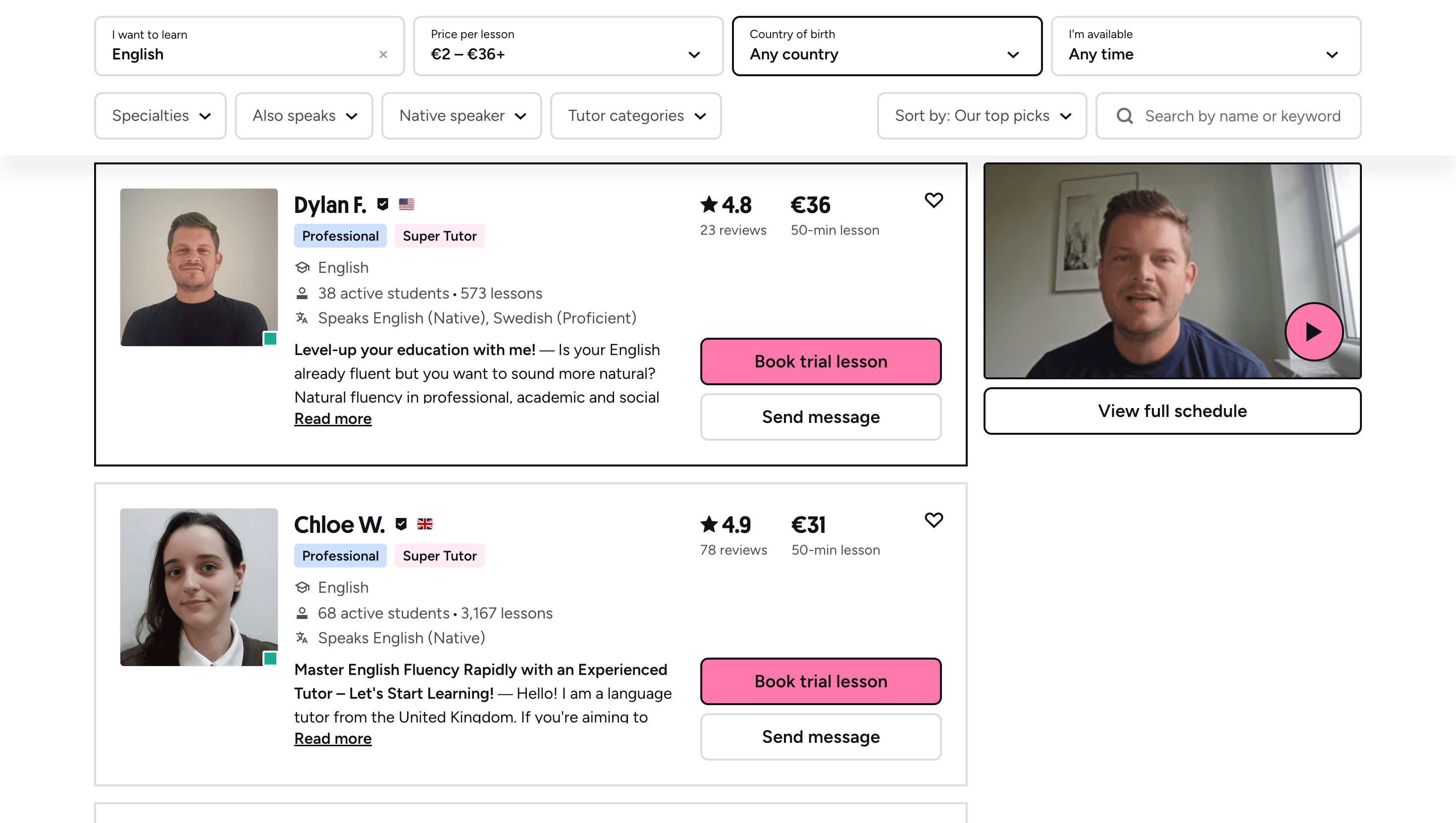
Many learners give up on language learning due to these high costs, missing out on valuable professional and personal opportunities.
That’s why we created Kylian: to make language learning accessible to everyone and help people master a foreign language without breaking the bank.
To get started, just tell Kylian which language you want to learn and what your native language is
Tired of teachers who don’t understand your specific struggles as a French speaker? Kylian’s advantage lies in its ability to teach any language using your native tongue as the foundation.
Unlike generic apps that offer the same content to everyone, Kylian explains concepts in your native language (French) and switches to the target language when necessary—perfectly adapting to your level and needs.
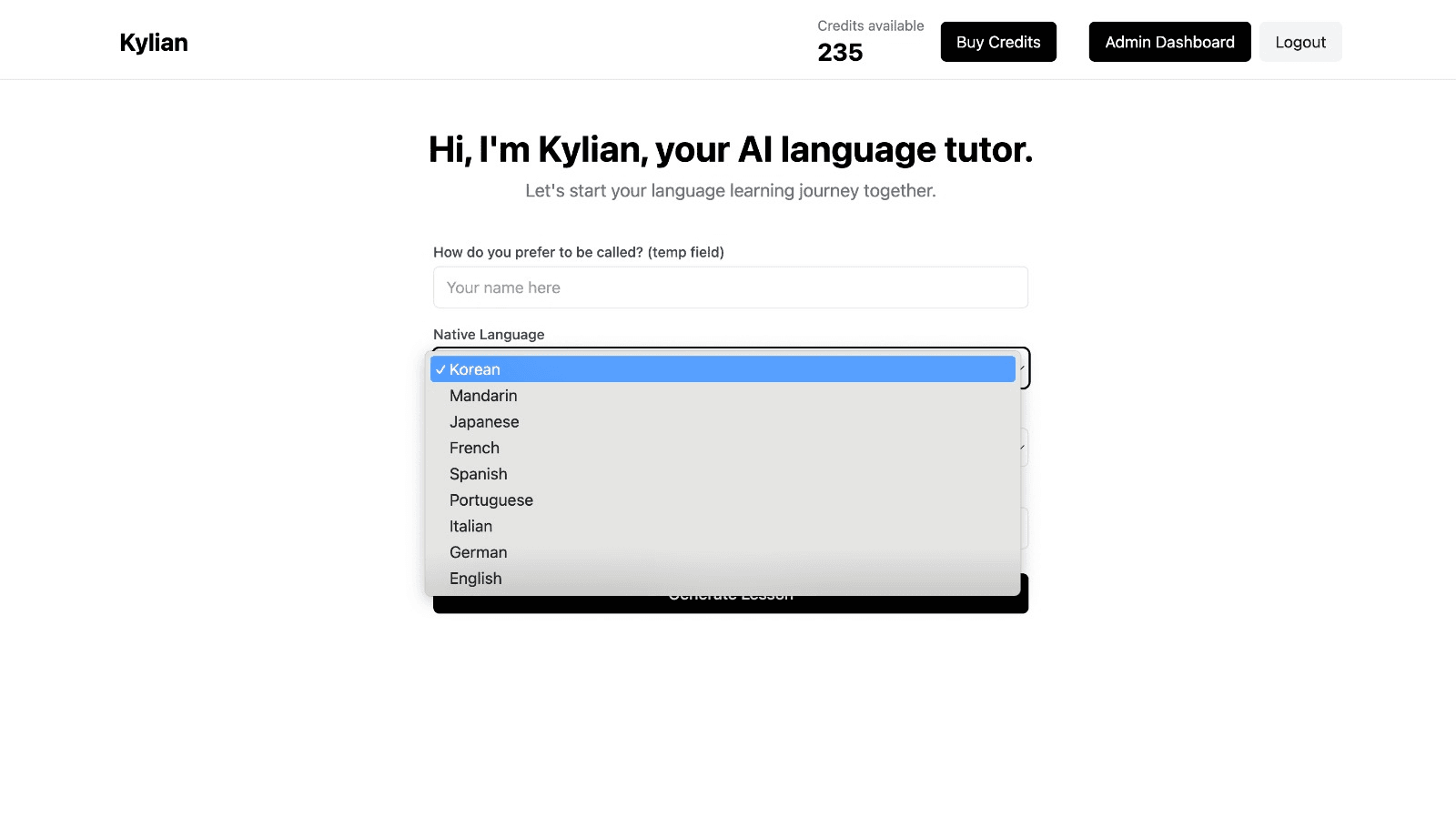
This personalization removes the frustration and confusion that are so common in traditional language learning.
Choose a specific topic you want to learn
Frustrated by language lessons that never cover exactly what you need? Kylian can teach you any aspect of a language—from pronunciation to advanced grammar—by focusing on your specific goals.
Avoid vague requests like “How can I improve my accent?” and be precise: “How do I pronounce the R like a native English speaker?” or “How do I conjugate the verb ‘to be’ in the present tense?”
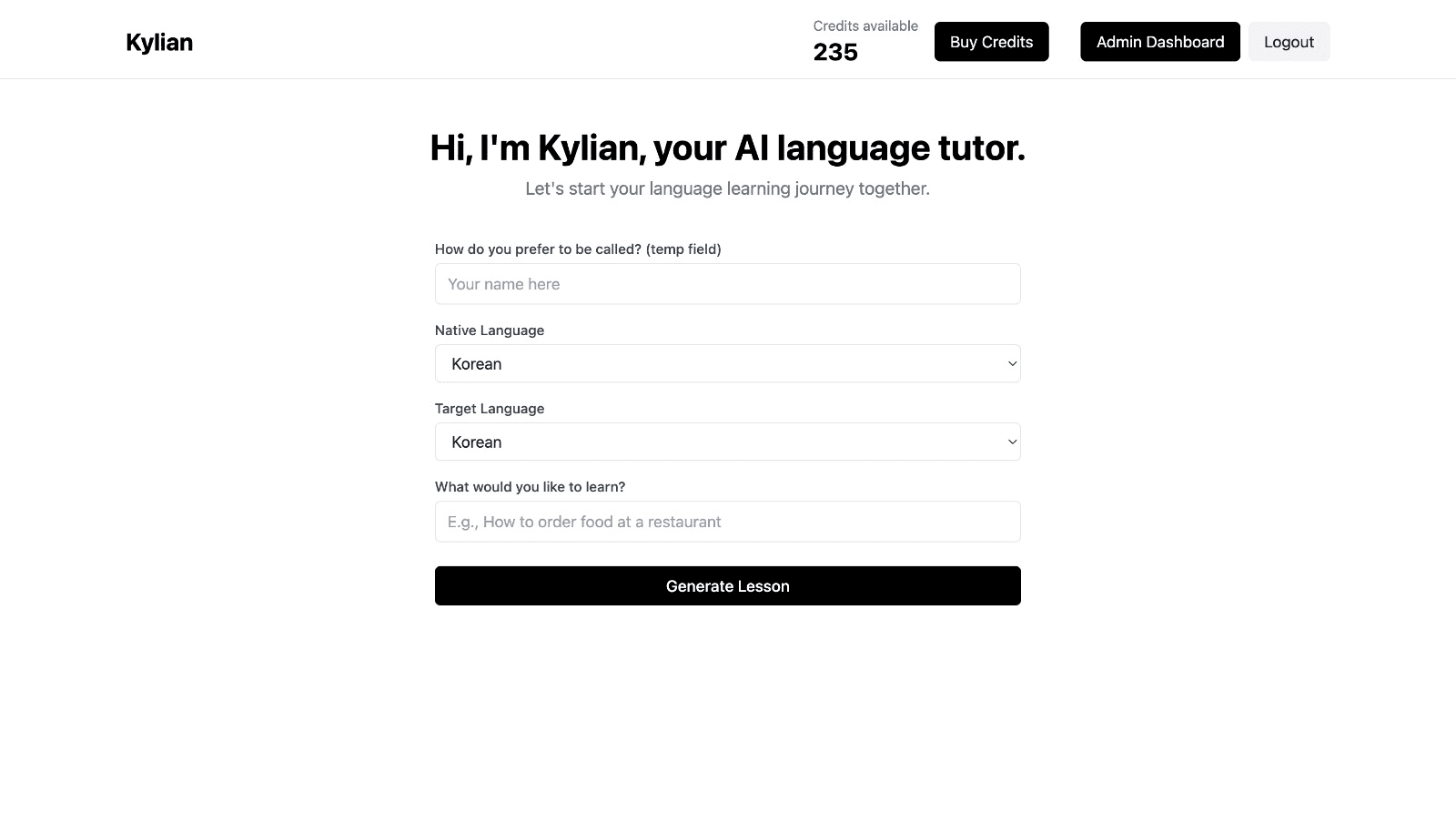
With Kylian, you’ll never again pay for irrelevant content or feel embarrassed asking “too basic” questions to a teacher. Your learning plan is entirely personalized.
Once you’ve chosen your topic, just hit the “Generate a Lesson” button, and within seconds, you’ll get a lesson designed exclusively for you.
Join the room to begin your lesson
The session feels like a one-on-one language class with a human tutor—but without the high price or time constraints.
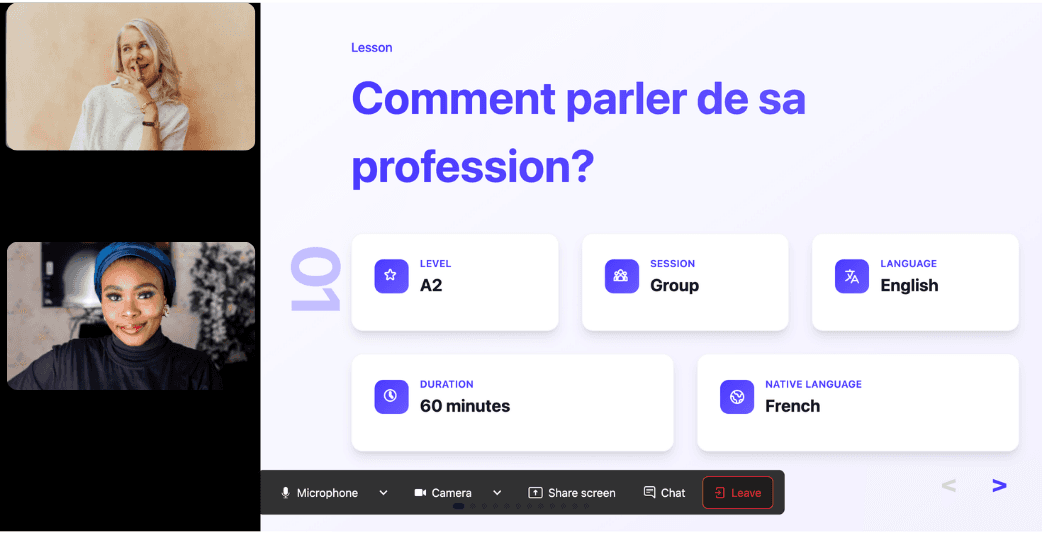
In a 25-minute lesson, Kylian teaches exactly what you need to know about your chosen topic: the nuances that textbooks never explain, key cultural differences between French and your target language, grammar rules, and much more.
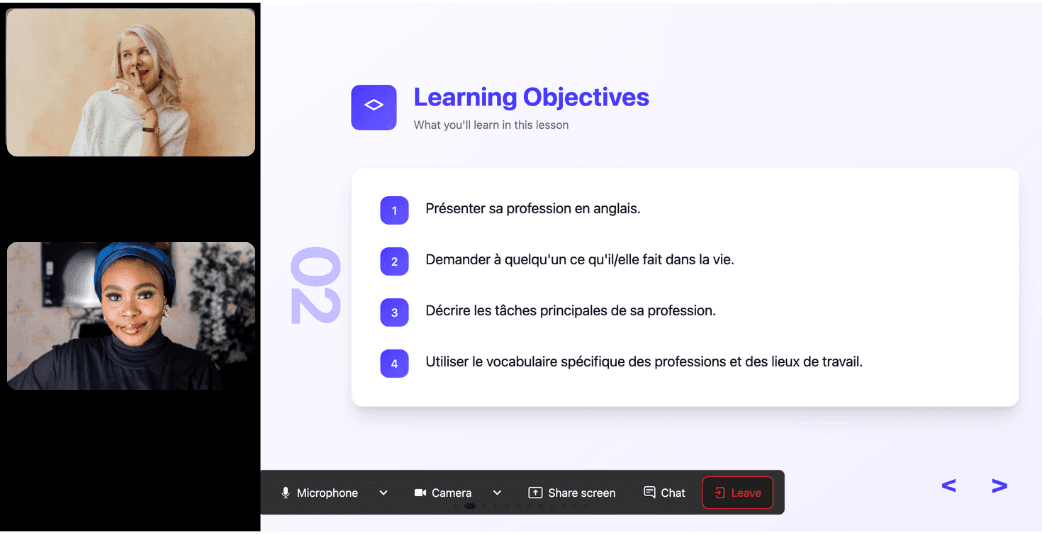
Ever felt frustrated trying to keep up with a native-speaking teacher, or embarrassed to ask for something to be repeated? With Kylian, that problem disappears. It switches intelligently between French and the target language depending on your level, helping you understand every concept at your own pace.
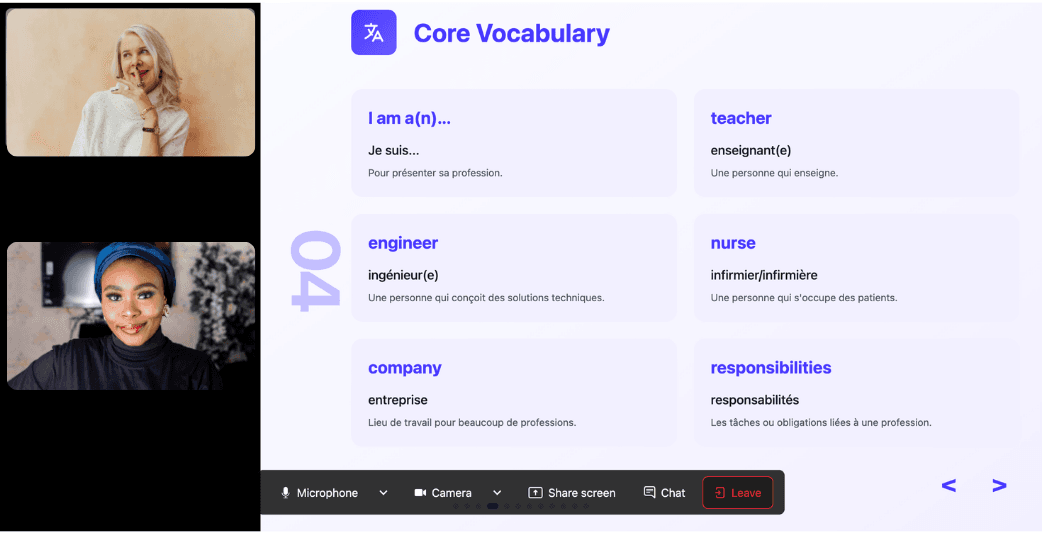
During the lesson, Kylian uses role-plays, real-life examples, and adapts to your learning style. Didn’t understand something? No problem—you can pause Kylian anytime to ask for clarification, without fear of being judged.
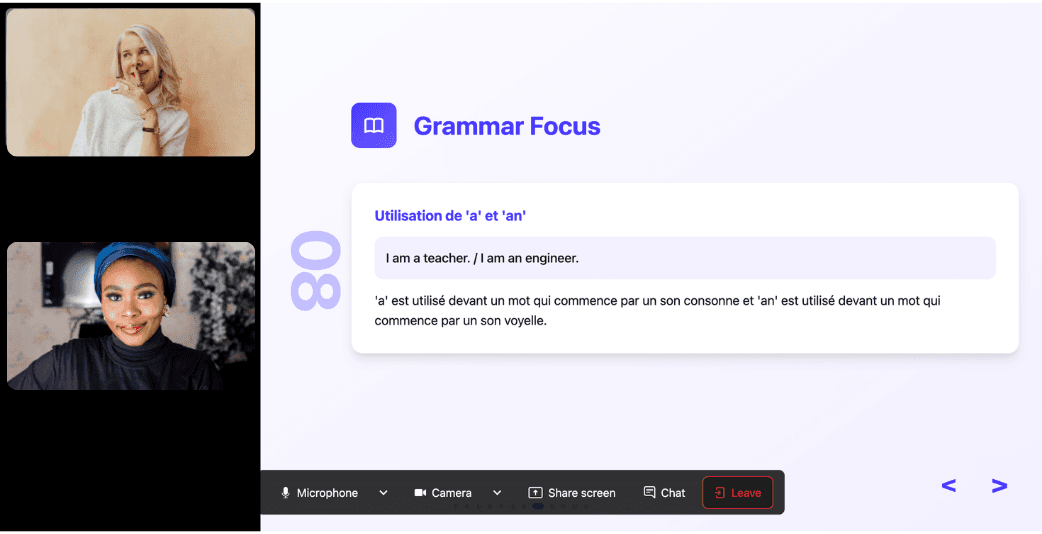
Ask all the questions you want, repeat sections if needed, and customize your learning experience in ways traditional teachers and generic apps simply can’t match.
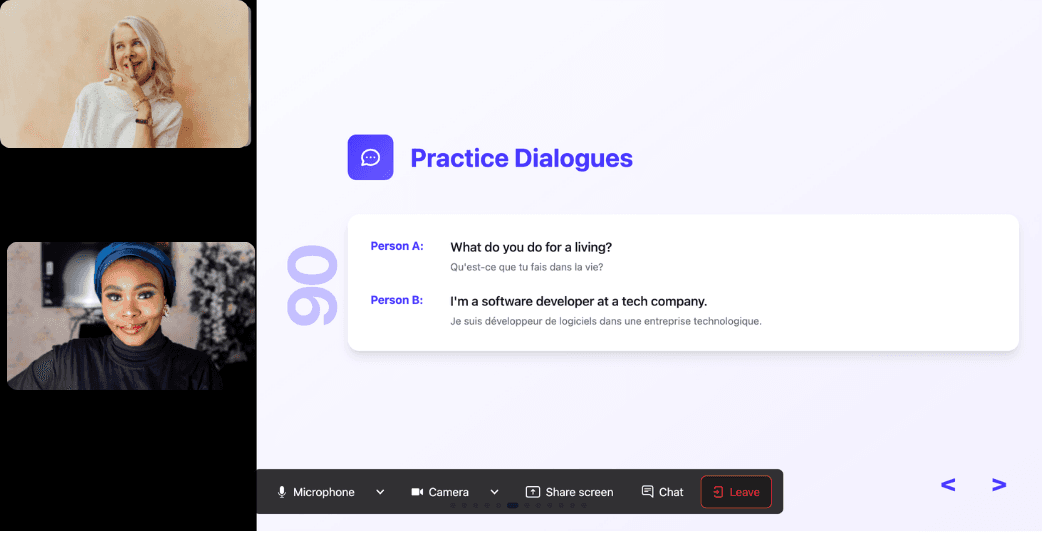
With 24/7 access at a fraction of the cost of private lessons, Kylian removes all the barriers that have kept you from mastering the language you’ve always wanted to learn.
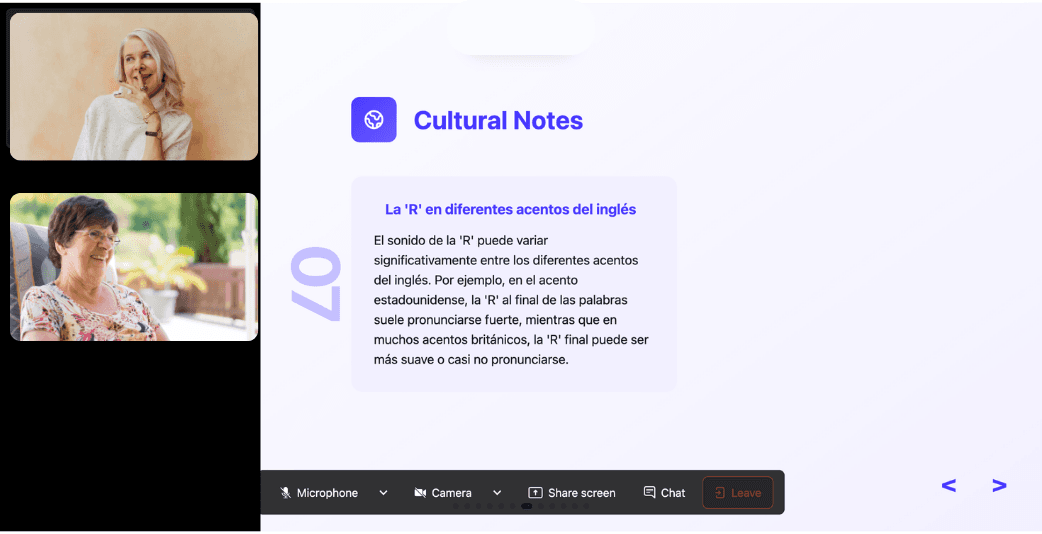
Similar Content You Might Want To Read

How to Say Hello in Norwegian: Your Complete Guide
Norwegian greetings matter more than most language learners realize. The way you open a conversation shapes every interaction that follows, whether you're navigating Oslo's business districts or connecting with locals in Bergen's fish markets. Understanding Norwegian greetings isn't just about memorizing phrases—it's about grasping the cultural framework that governs Norwegian social interaction. The stakes are higher than you might think. Norwegians value directness and authenticity, which means using the wrong greeting at the wrong time doesn't just sound awkward—it signals that you don't understand the social context. This matters because Norway's egalitarian culture treats proper greeting etiquette as a sign of respect and social awareness.

9 Clothing Idioms in English: Master These Key Phrases
Language acquisition transcends mere vocabulary memorization and grammatical structures. The true mastery of English lies in understanding its idiomatic expressions—those peculiar phrases that native speakers use instinctively but often perplex language learners. Among these linguistic treasures, clothing idioms occupy a particularly fascinating space, reflecting centuries of cultural evolution and human experience through the lens of what we wear. Why focus on clothing idioms now? The answer lies in their ubiquity and practicality. These expressions appear regularly in professional settings, casual conversations, and written communication. Understanding them isn't merely academic—it's essential for anyone seeking genuine fluency and cultural literacy in English.

12 English Money Idioms: Phrases & Finance Terms
Financial literacy extends beyond understanding compound interest or market volatility. The English language embeds centuries of economic wisdom within its idiomatic expressions, creating a linguistic framework that reflects how societies conceptualize wealth, poverty, and everything between. These expressions matter because they reveal cultural attitudes toward money that influence business negotiations, workplace dynamics, and everyday conversations. When someone says they're "tightening their belt," they're not discussing fashion—they're communicating economic pressure using metaphorical language that carries specific cultural weight. Understanding money idioms serves three critical functions: it enhances comprehension in professional settings, provides insight into English-speaking cultures' relationship with finance, and offers nuanced ways to discuss sensitive financial topics without direct confrontation.

Complete Spanish Color Guide: Vocabulary & Cultural Insights
Mastering color vocabulary in Spanish unlocks a deeper level of cultural fluency and descriptive precision. Far beyond simple translations, understanding colors in Spanish connects you to centuries of artistic tradition, cultural symbolism, and everyday communication patterns unique to Spanish-speaking regions. When you grasp the nuances of how Spanish speakers describe colors—from the vibrant reds of flamenco dresses to the azure blues of Mediterranean waters—you gain access to more authentic interactions with native speakers. This cultural knowledge enhances both your practical communication skills and your appreciation of the rich aesthetic traditions across the Spanish-speaking world.

Japanese Colors: A Critical Guide for Language Learners
Colors illuminate our world and shape how we describe it. For Japanese language learners, mastering color vocabulary isn't merely about expanding your lexicon—it's about accessing a cultural framework that reveals nuanced thinking patterns and communication styles. Understanding these color concepts forms a critical foundation for meaningful conversation and deeper language comprehension.
![French Season Names: Master All Four Seasons [French]](/_next/image?url=https%3A%2F%2Fcdn.sanity.io%2Fimages%2F147z5m2d%2Fproduction%2F3562c4699965a6e0e4fa96717e9237ef09850e8b-2240x1260.png%3Frect%3D175%2C0%2C1890%2C1260%26w%3D600%26h%3D400&w=3840&q=75)
French Season Names: Master All Four Seasons [French]
Learning French season names represents more than vocabulary acquisition—it unlocks cultural understanding and conversational fluency that native speakers expect. French seasons carry distinct linguistic patterns, pronunciation challenges, and cultural significance that English speakers often overlook.